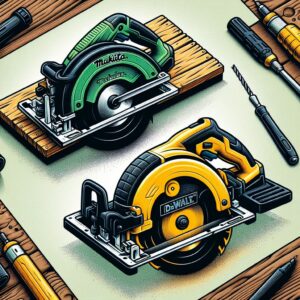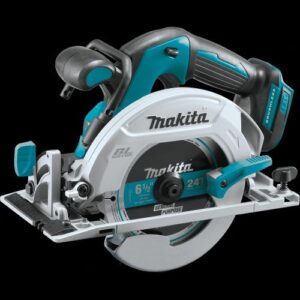From Knives to Chisels: Comparing Work Sharp Sharpeners
|
Tool Type |
WS3000 |
MK2 |
|---|---|---|
|
Chisels |
Optimized for precision woodworking tools |
Adjustable for various angles |
|
Plane Irons |
Specifically designed for flat blades |
Can accommodate with angle adjustment |
|
Knives |
Not ideal for flexible or thin blades |
Excellent with adjustable guides |
|
Garden Tools |
Not recommended |
Great for sharpening with the right attachment |
When choosing between the WS3000 and the MK2, consider the types of tools you use most. The WS3000 excels with woodworking tools, providing a level of sharpness necessary for fine work. On the other hand, the MK2’s versatility makes it a better choice for those who work with a broader range of tools.
For instance, if you’re primarily a woodworker, the WS3000 will give your chisels and plane irons the edge they need. But if you’re looking for a sharpener that can handle everything from kitchen knives to garden shears, the MK2 is the way to go.
Besides that, think about the space in your workshop. The WS3000 is a benchtop model, which means it needs a permanent spot. The MK2, being more compact, can be stored away when not in use, making it ideal for smaller spaces.
At the end of the day, the right sharpener for you is the one that meets your needs, fits your space, and feels good to use. It’s a personal choice, but one that will have a significant impact on your crafting.
Model Breakdown: Work Sharp Sharpeners
WS3000 Wood Tool Sharpener
For woodworkers, the Work Sharp WS3000 is a revelation. This model is specifically engineered to sharpen woodworking tools like chisels and plane irons with speed and precision. It’s a woodworker’s best friend because it transforms blunt tools back into their glory, enabling crisp and accurate cuts. Here’s what makes the WS3000 stand out:
- It’s designed to handle the unique requirements of woodworking tools.
- The sharpener includes a powerful motor and a range of abrasive disks for different sharpening stages.
- It offers a precise angle control, which is vital for maintaining the integrity of your tools.
MK2 Knife and Tool Sharpener
Then there’s the MK2 model, a versatile beast in the sharpening world. It’s not just for woodworkers; it’s an all-rounder, perfect for anyone needing a sharp edge. From kitchen knives to garden shears, the MK2’s adjustable sharpening system allows you to customize the angle for each tool. Its standout features include:
- An adjustable sharpening guide that can be set from 15° to 30°, accommodating a wide range of tools.
- A user-friendly design that makes it easy for anyone to achieve professional-grade sharpness.
- The inclusion of premium abrasives for a long-lasting and efficient sharpening process.
Whether you’re a seasoned woodworker or a DIY enthusiast, understanding the capabilities of these two models is crucial. The WS3000 is excellent for dedicated woodworking tasks, while the MK2 offers broader versatility. Your choice will depend on the types of tools you frequently use and the level of precision you require.
The Sharpening Experience: Features Explored
User-Friendly Design Elements
One thing’s for sure, Work Sharp knows how to make a user-friendly sharpener. Both the WS3000 and the MK2 boast intuitive controls and straightforward setups. Here’s why that matters:
- Woodworking requires precision, and these sharpeners are designed to deliver just that with minimal hassle.
- Their design eliminates guesswork, so you can focus on the craft, not the tool maintenance.
- Clear instructions and simple mechanics mean less time setting up and more time sharpening.
When you’re in the zone, crafting something with your hands, the last thing you want is a complicated sharpening process. Work Sharp gets this, which is why their sharpeners are a favorite in workshops around the world.
Remember, a sharp tool is a safe tool. Not only does it make your work more precise, but it also reduces the risk of accidents. These sharpeners help you maintain your edges without cutting into your creative time.
Case Studies: From Dull to Dynamic
Consider the story of Jim, a seasoned woodworker who turned his hobby into a small business. Jim’s chisels were his pride and joy, but he struggled to keep them sharp, which affected the quality of his work. After switching to the Work Sharp WS3000, Jim noticed a remarkable difference. His tools were sharper than ever, and his work became more precise and efficient. Orders for his handcrafted pieces began to soar.
Then there’s Sarah, a culinary enthusiast who loves to dabble in woodworking. Her diverse range of knives and carving tools were a challenge to maintain until she discovered the MK2. With its adjustable angles and various abrasives, Sarah was able to keep all her tools in razor-sharp condition, enhancing her cooking and crafting experiences alike.
Industry Tips for Optimal Sharpness
Here are a few tips to ensure you get the most out of your Work Sharp sharpener:
- Always start with a coarser grit to reshape or repair a dull edge, then progress to finer grits for honing.
- Keep a light touch; let the machine do the work. Pressing too hard can generate excess heat and damage the tool.
- Regularly clean your sharpener and replace the abrasives as needed to maintain performance.
Walkthrough: Setup and Sharpening
Getting Started with Your Work Sharp Model
Setting up your Work Sharp sharpener is straightforward. Begin by selecting the appropriate abrasive for the tool you’re sharpening. For the WS3000, attach the abrasive to the tempered glass wheel, ensuring it’s smooth and secure. For the MK2, insert the abrasive belt according to the instructions.
Next, adjust the angle guide to match the bevel angle of your tool. This is crucial; the correct angle will ensure a sharp edge without removing too much material. With the WS3000, you’ll set the angle using the top knobs. The MK2 features an adjustable guide that you can set with a simple turn.
Once everything is set up, gently place your tool against the abrasive and let the sharpener do its magic. Remember to periodically check the edge for sharpness and avoid overheating the tool.
Advanced Techniques for Seasoned Users
For those who’ve been sharpening tools for a while, the Work Sharp systems offer the chance to refine your skills further. Experimenting with slight adjustments to the bevel angle can lead to even sharper edges tailored to specific tasks. Here are a few advanced tips:
- Try creating a micro-bevel on your chisels with the WS3000. This involves sharpening at a slightly higher angle for just the tip of the edge, resulting in a durable, yet razor-sharp edge.
- With the MK2, play around with different belts. The finer belts can polish your blade to a mirror-like finish, which isn’t just for looks—it can help the blade glide through material with less resistance.
- Remember to periodically pause and inspect your edge. A magnifying lens can be a valuable tool for spotting any irregularities on the blade.
Pushing your sharpening skills to the next level will not only make your work more enjoyable, but it’ll also instill a sense of pride in your tools and what you create with them.
Frequently Asked Questions
When it comes to sharpening, there are always questions. Let’s address some of the most common ones to ensure you’re getting the best out of your Work Sharp sharpener.
What Makes Work Sharp a Preferred Choice for Woodworkers?
Work Sharp sharpeners are favored by woodworkers because they offer a combination of precision, ease of use, and versatility. The WS3000, for example, is tailored for woodworking tools, making it an ideal choice for those looking to maintain chisels and plane irons. The MK2’s adjustable system caters to a broader range of tools, making it a versatile option for workshops that handle various sharpening tasks.
Can I Sharpen Serrated Knives and Garden Shears?
Yes, the MK2 model is particularly adept at handling a variety of tools, including serrated knives and garden shears. The key is to use the correct abrasive belt and to adjust the sharpening guide to fit the specific tool you’re working on. The flexibility of the MK2 makes it a versatile sharpener for both the kitchen and the garden shed.
How Do I Maintain My Work Sharp Sharpener for Longevity?
Maintaining your Work Sharp sharpener is straightforward. Keep it clean from metal filings and dust, replace the abrasives when they wear out, and ensure you don’t overload the motor by pushing too hard on the tool you’re sharpening. Regular care will keep your sharpener running smoothly for years to come.
What Safety Precautions Should I Take While Using the Sharpener?
Safety should always be your top priority. Always wear eye protection to guard against any metal filings or dust. Ensure your Work Sharp sharpener is placed on a stable and flat surface. Keep your fingers clear of the moving parts and the abrasive belts or disks. And never leave the sharpener unattended while it’s running.
Where Can I Learn More About Exact Sharpening Angles for My Tools?
To learn more about the specific sharpening angles for your tools, consult the user manuals provided with your Work Sharp sharpener. Additionally, there are numerous resources available online, including forums, videos, and articles dedicated to sharpening techniques. The woodworking community is vast and sharing knowledge is part of the craft’s culture, so don’t hesitate to reach out and ask for advice. Remember, the right sharpener and technique can elevate your woodworking from a hobby to an art form. Whether you’re a novice or a seasoned pro, Work Sharp sharpeners can play a crucial role in your crafting journey. Keep your tools sharp, your mind sharper, and enjoy the satisfaction that comes from creating with precision.



